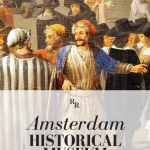Amsterdam Historical Museum
I visited the Amsterdam Historical Museum (more properly just called the Amsterdam Museum) as an afterthought. It was on my list: one of the many small museums and other sights to see in Amsterdam that I like to visit and write about.
That day, though, I wanted to see Below the Surface, an archeological exhibit in Rokin metro station. But that didn’t take me long and, noticing signs in the metro station to the Amsterdam Museum, that’s where I went.
NOTE added May 17, 2024: This museum is undergoing a multi-year renovation so it has moved temporarily to another location: Amstel 51. Its new name is Amsterdam Museum aan de Amstel. The move means that the parts of the museum that have to do with the building’s history as an orphanage are not available for now. Instead, the “Panorama Amsterdam” is still available, covering the history of the city. The rest is temporary exhibitions of various sorts. Some exhibitions are in a different location, the Willet-Holthuysen House at Herengracht 605, which I’ve also reviewed on this site. See the museum’s website for a list of current exhibitions.
Disclosure: This post contains affiliate links. That means I’ll receive a small commission on anything you buy through clicking the links. This will not affect your price.
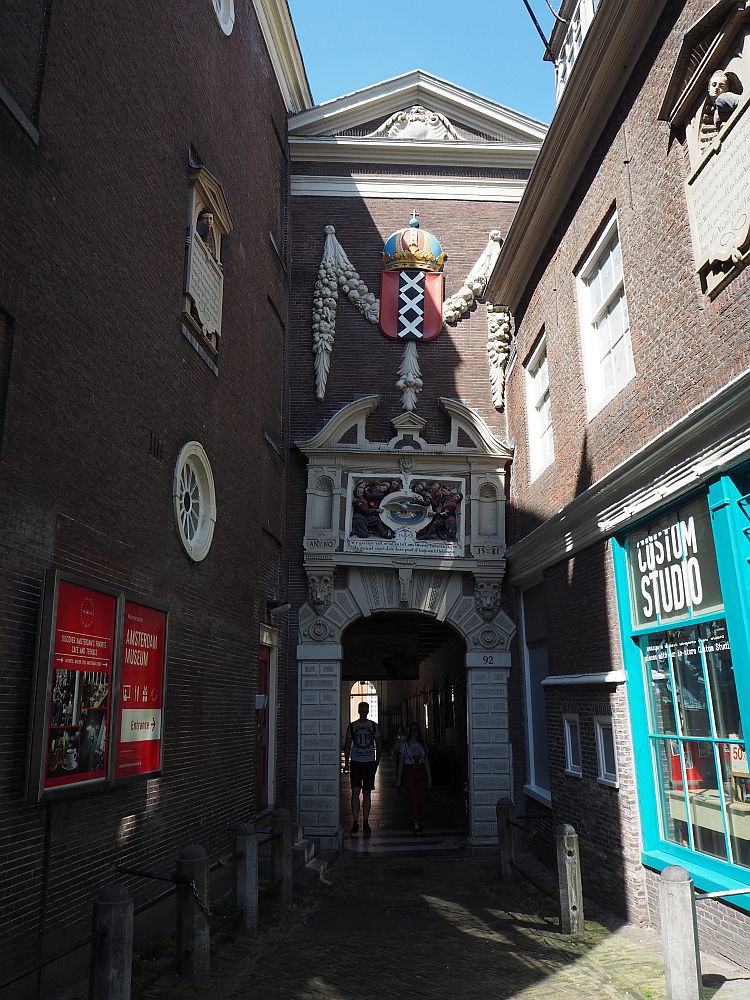
The Amsterdam Historical Museum, of course, focuses on the city of Amsterdam. Using a series of interactive exhibits inside a Golden Age-era building, it takes visitors through the history of the city, addressing the different ways in which it has been viewed and redefined along the way.
The Civic Orphanage at Amsterdam Historical Museum
The Amsterdam Museum is housed in what used to be the Civic Orphanage, founded in 1578. Before that, the building was a convent, but once the Reformation hit Amsterdam, the city government confiscated the building from the nuns who lived there.
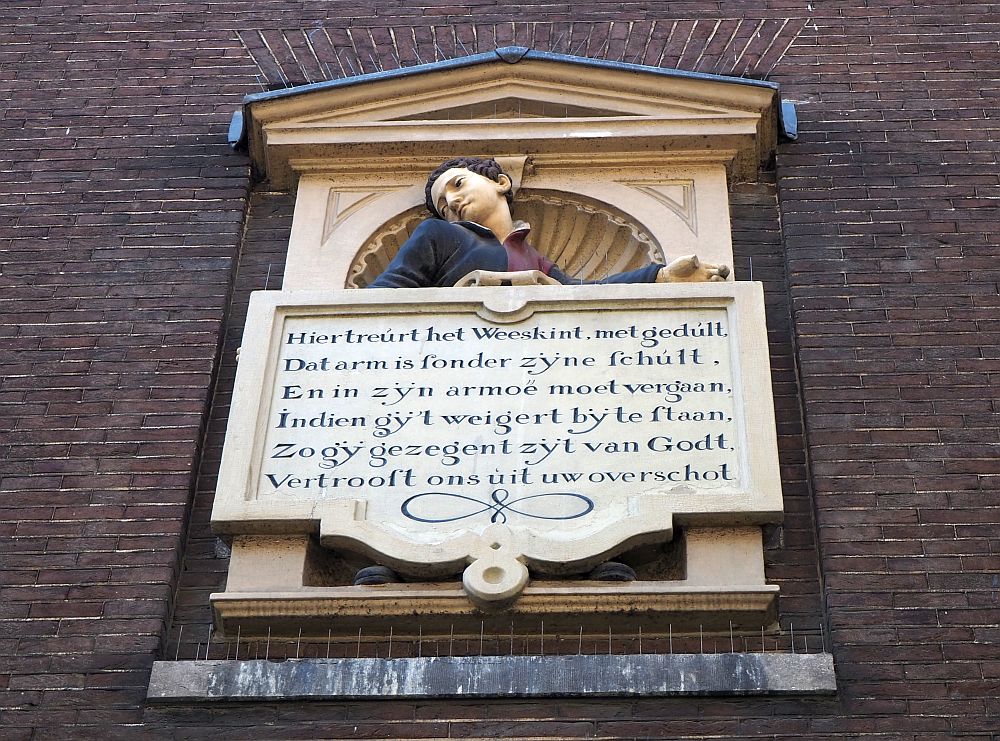
Here languishes the orphan, with patience,
Who is poor through no fault of his own,
And in his poverty he must perish,
If you refuse to stand by him,
Thus you who are blessed by God,
Comfort us with your surplus.
The children, in that period often orphans because of the plague or other infectious diseases, received schooling and training at the Civic Orphanage. The boys learned trades and the girls learned homemaking skills. The orphanage had a good reputation: a high-status project, it stayed in operation until 1960.
The traces of the orphanage are visible in various ways today. For one thing, the boys’ lockers, where they stored the tools they used in their vocational apprenticeships, open out onto the inner courtyard of the building. Today they shelter an exhibit about the orphanage, and visitors can peer into each one to learn about aspects of the children’s lives: their routine, what they were taught, how they got there, what they wore, and so on.
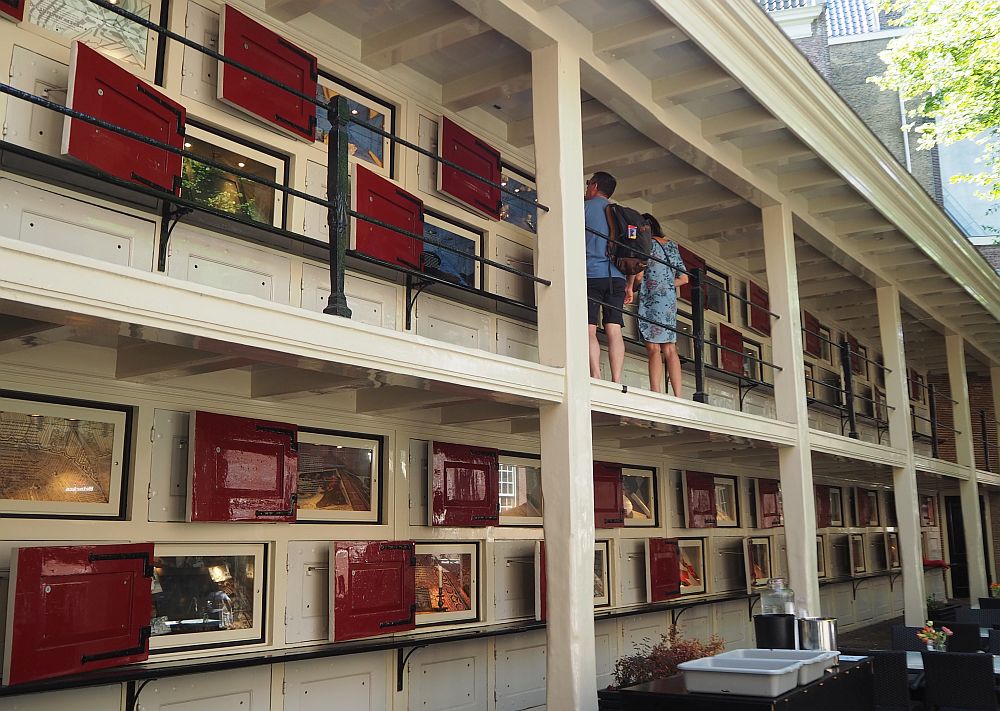
The idea was to bring these poor orphans up in a Christian environment so that they would become good workers as adults. Placing the orphanage in such a central location was intentional: to make sure the people of Amsterdam saw them and how neat and obedient they were, so that the city’s prominent citizens would donate to support the orphanage.
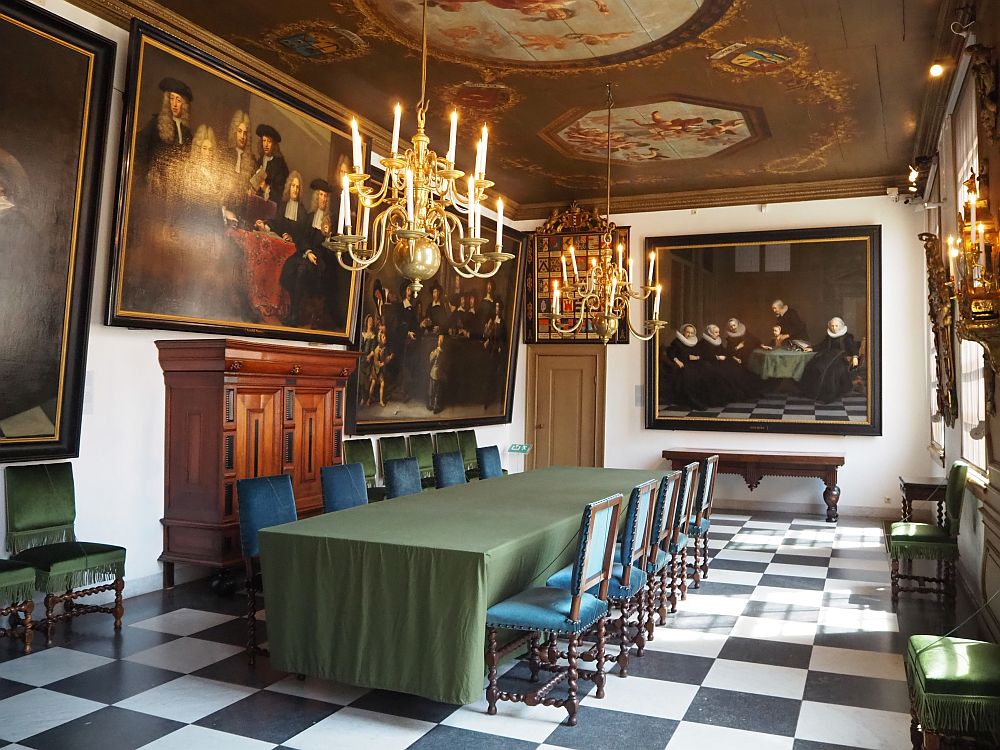
The Regentenkamer (the Regents’ room) was where the governors of the orphanage met: six men, prominent citizens doing charity work for the poor. Four female regents met separately from the men. Regents commissioned paintings of themselves, emphasizing their status as leaders in charity. This painting, for example, from elsewhere in the building, is The Governesses of the Civic Orphanage, by Adriaen Backer, and dates from 1683.
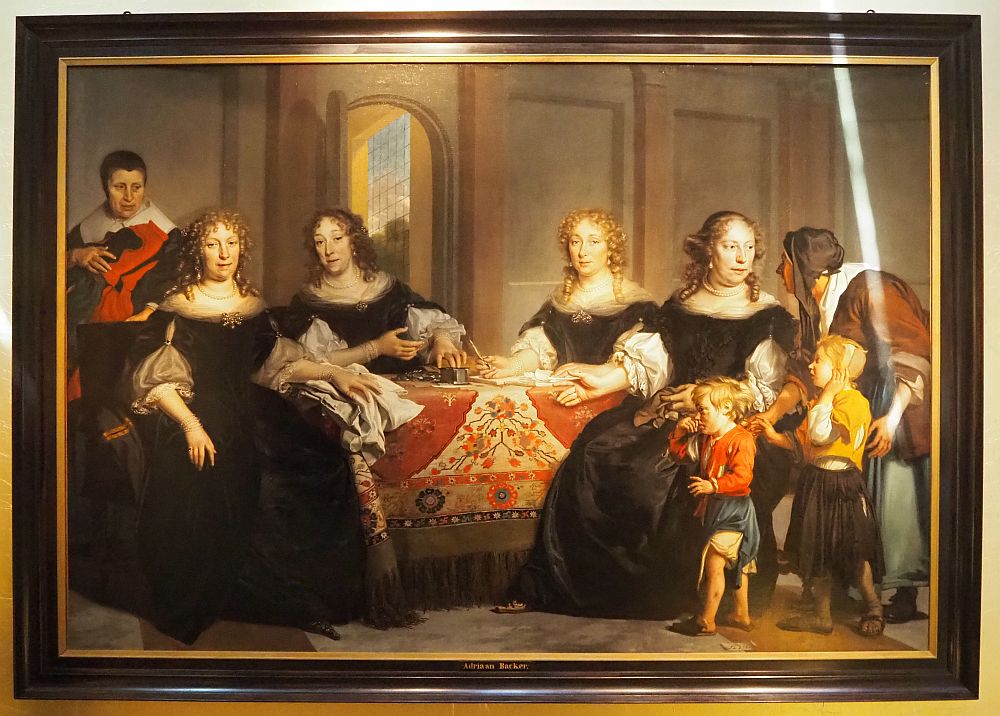
The Little Orphanage
An exhibit for children called “The Little Orphanage” gives a more hands-on look at life in the orphanage in the 17th century. Kids visit rooms of the orphanage including the refectory (where the orphans ate), a dormitory, and so on.
Through a wristband they receive at the entrance, children can activate “speaking objects” along the way, which tell the story of an orphan named Jurriaan. In these rooms the children are allowed to touch things, and that includes activities like crawling through a tunnel, lying on a bed, dressing in an orphan’s uniform, and so on.
If you are planning a visit to the Netherlands, you might also enjoy these articles:
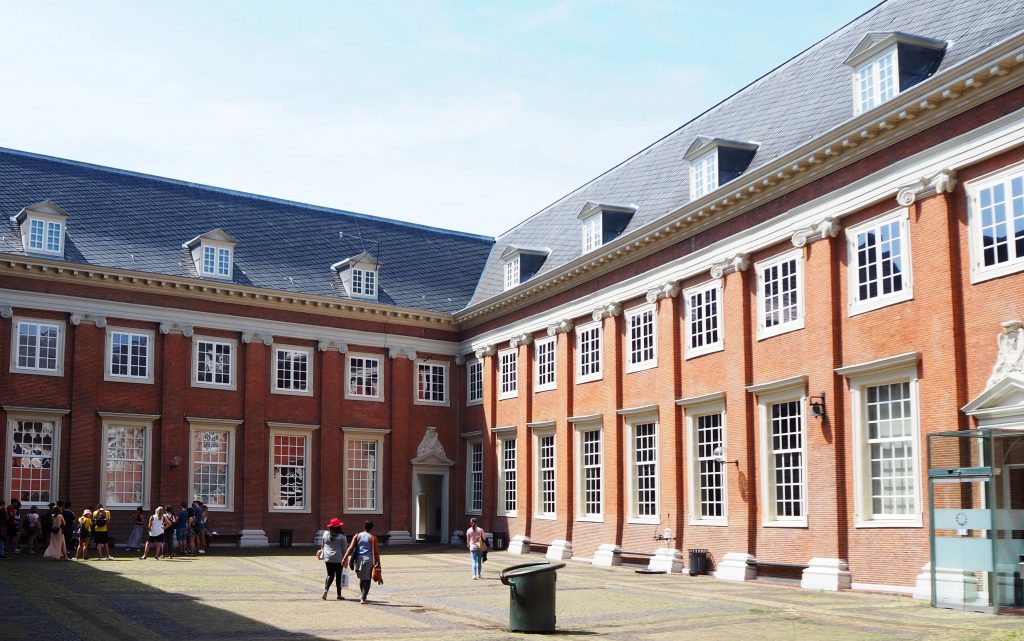
Amsterdam DNA
A permanent exhibition of the Amsterdam Historical Museum, “Amsterdam DNA,” covers the larger history of the whole city. I found some of the detail most interesting, some of which I’m including in this article as “little-known facts.”
The diagrams showing the city in comparison to sea level emphasize the importance of water management. Other diagrams show the piles that the 17th century buildings in Amsterdam’s center still rest on: the sheer number is truly impressive, especially when you realize that all those piles came to Amsterdam from other parts of the world, particularly America.
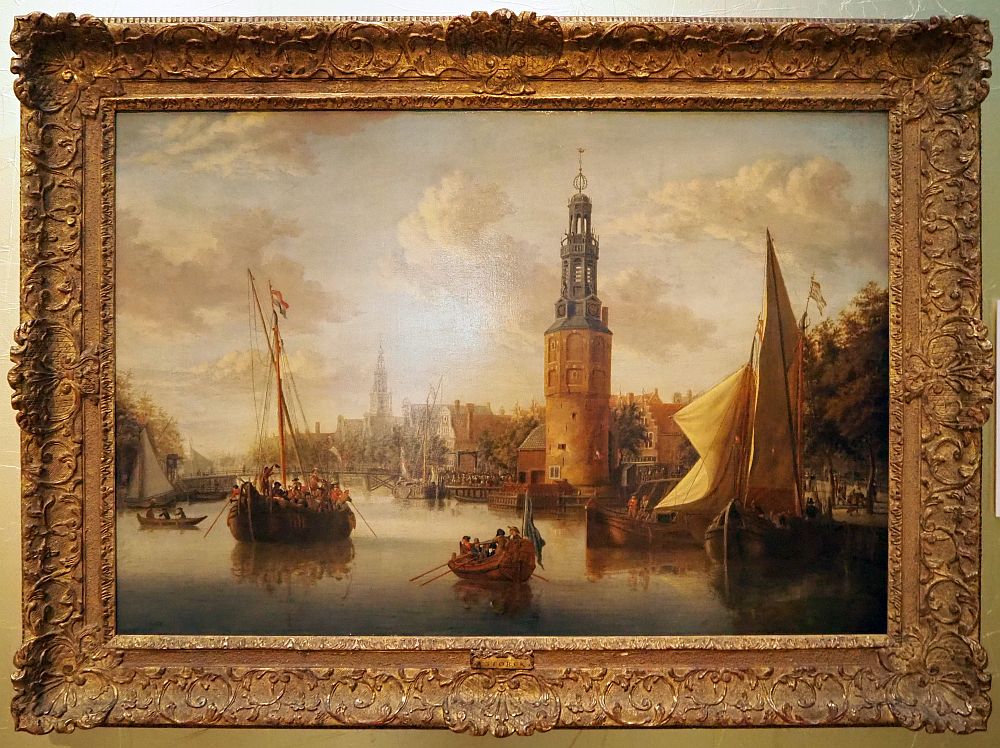
The displays cover Amsterdam’s importance as a major world port and all of the major turning points in Amsterdam history including the impact of the Dutch East India Company on Amsterdam’s growth, the effects of the Reformation on city life, the city’s importance in Europe and as a colonial power, and so on. It does not shy away from the dark side of what is still called the “Golden Age.”
I was touched by the simplicity and effectiveness of a wall in the World War II section. I didn’t see what the pattern on it meant until I moved closer and saw that each of the little dots was a human figure: men, women and children. The wall shows all 60,000 Jews from Amsterdam who died in the Holocaust.
Providing a proud note, later in the chronology, a small display marks the first day of same-sex marriages in the Netherlands in 2001.
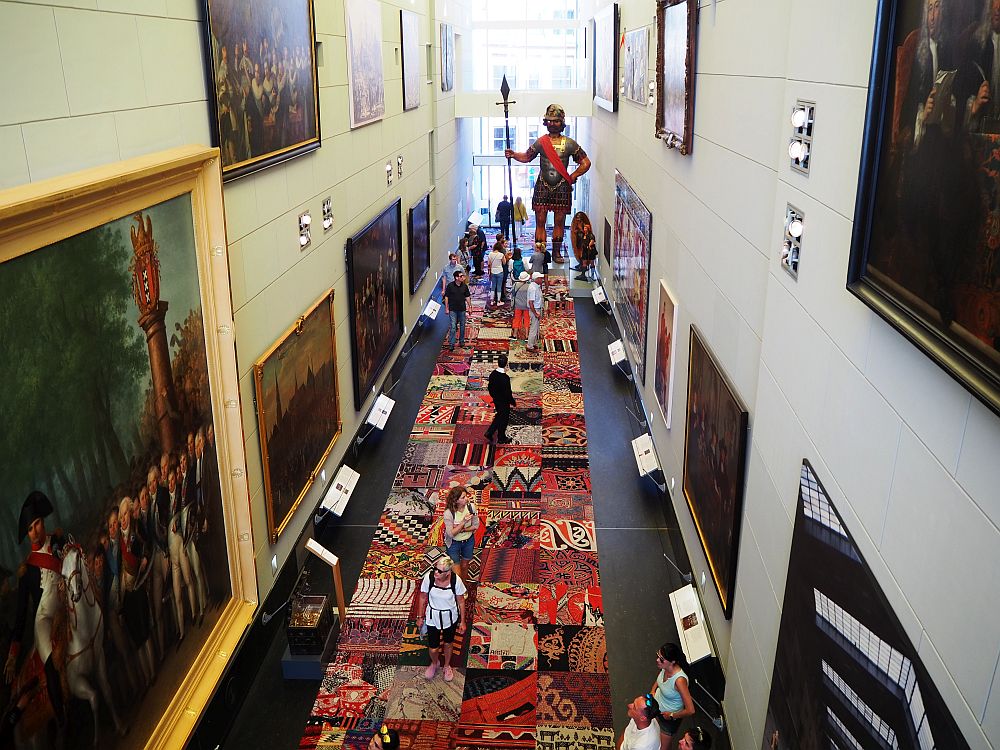
A window reveals a painting called Amsterdam Civic Guard Portrait, from 2001, mounted high in the central hallway of the museum, a clear reference to Rembrandt’s Nightwatch.
It portrays a grouping of “free spirits of Amsterdam”: well-known businessmen, artists, politicians, protesters, writers, sportsmen, musicians. The figure in the center, “Mokum,” represents Amsterdam in all its grittiness, complete with a joint in her hand and a tattoo of Rembrandt on her breast.
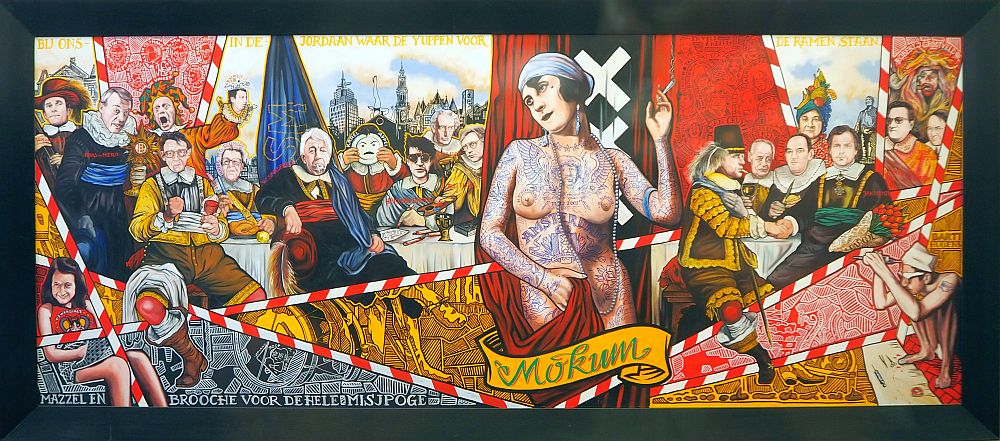
World – City
World – City is the other permanent exhibit of the Amsterdam Historical Museum, and it follows on very logically from the Amsterdam DNA exhibit. It focuses on the city’s place in the world: its relationship to other parts of the world, but also its inhabitants themselves, a very diverse population, both today and in the past.
The museum seems to emphasize the different ways that Amsterdam has redefined itself over the centuries; I found its look at more recent shifts quite interesting. How did a wealthy city, built, both figuratively and literally, on the profits of the slave trade and colonialism, transition over the centuries to the still-unattained ideal of tolerance that it cherishes today?
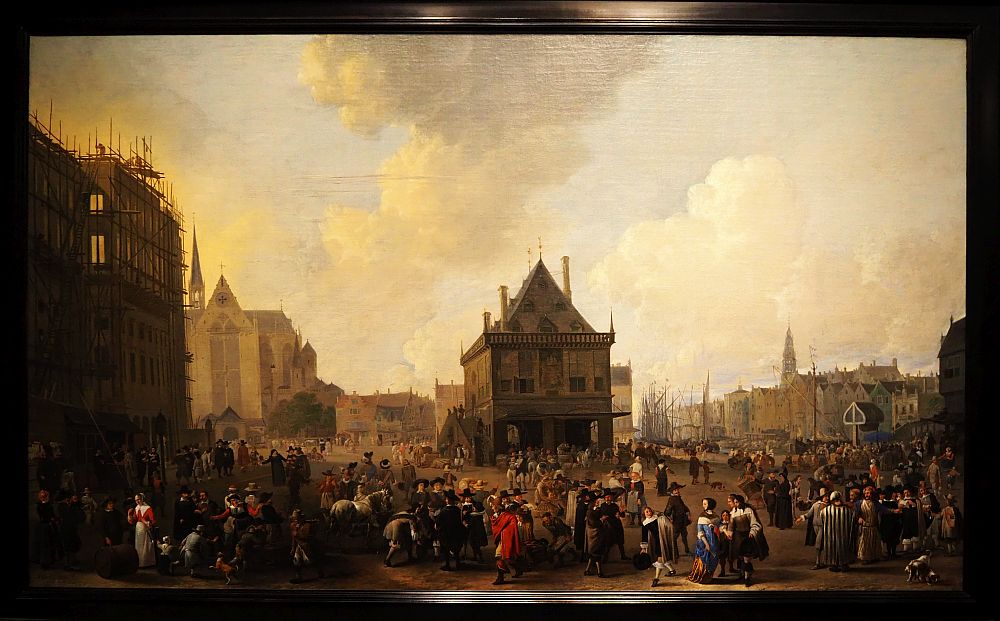
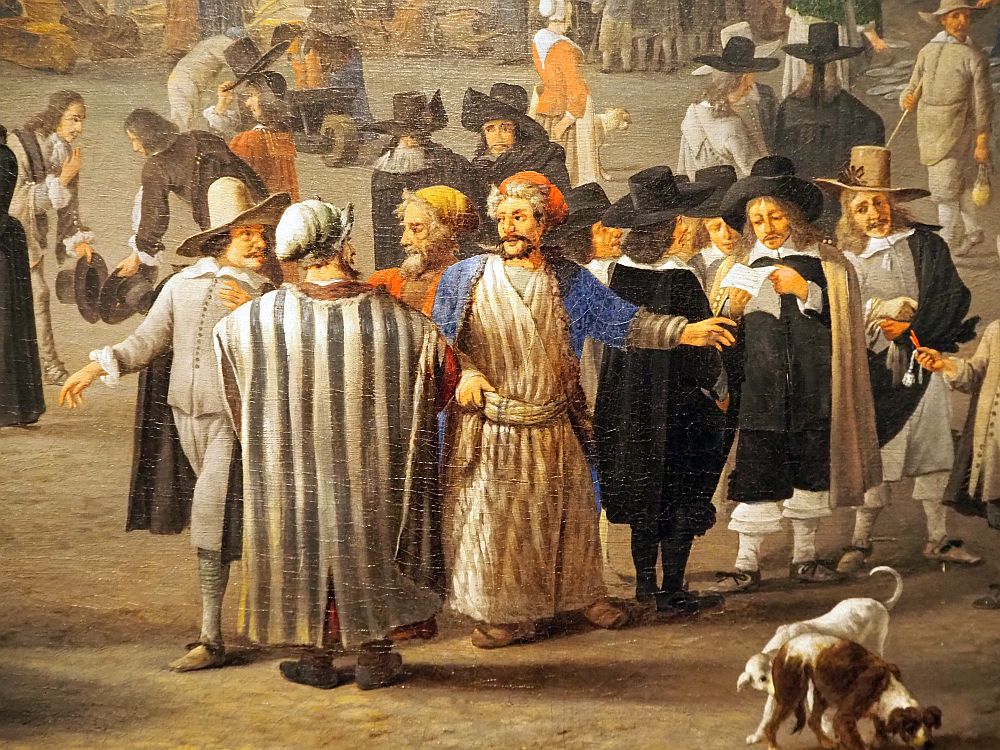
This presentation does not hesitate to confront Amsterdam’s colonial past and its present-day remnants. It has six sections: “From settlement to world city,” “Seeking happiness,” “I Amsterdam,” “Perpetrator or victim,” Religion and tolerance,” and “World – City revisited.”
A section on some of 20th century protest movements would be particularly interesting, I think, to foreigners visiting Amsterdam. It illustrates the kinds of domestic political controversies, mostly unknown to visiting tourists, that arguably led to the city’s current attitude of pragmatic tolerance.
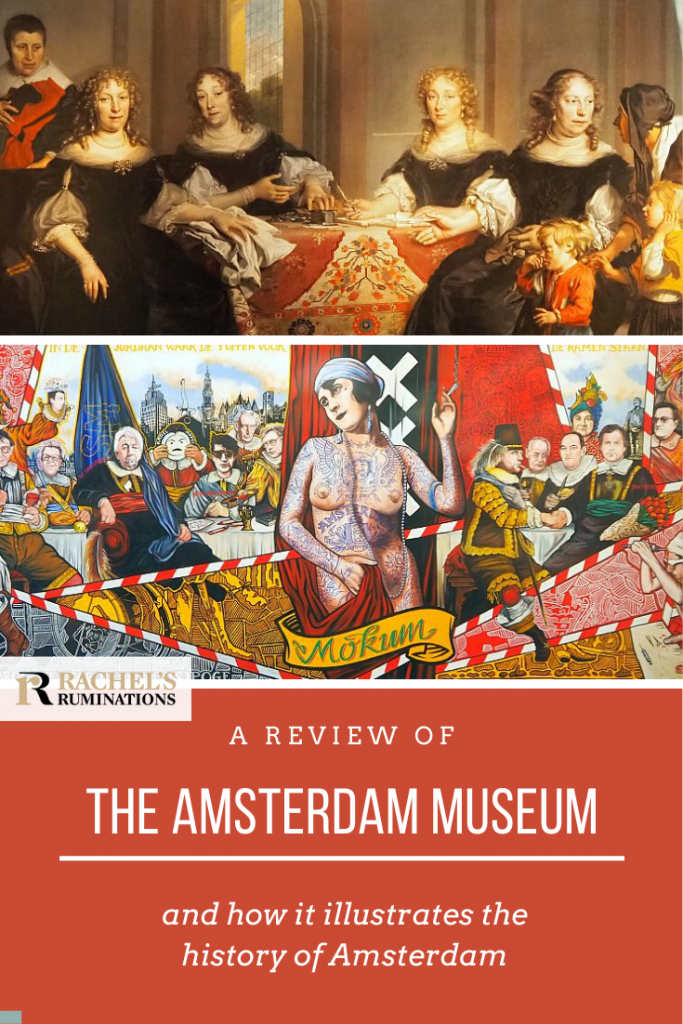
Visiting the Amsterdam Historical Museum
Amsterdam Museum: Kalverstraat 92 or Sint Luciënsteeg 27: a 15-minute walk from Central Station, or tram 2, 11 or 12 and get off at Spui, or 14 or 24, getting off at Rokin. Nearest metro stop: Rokin, metro number 52.
Amsterdam Museum at the Amstel: Amstel 51. Take the metro line 51, 54 or 53 or tram 14 from Amsterdam Central Station. Get off at Waterlooplein and walk for 3 minutes.
Willet-Holthuysen House: Herengracht 605. Waterlooplein is the nearest stop for this museum as well, and it’s about a 4-minute walk between the two.
Opening hours: daily 10:00-17:00.
Price: Adults: €18, but it’s free for children up to and including 17 years old. Buy your tickets ahead of time here, or use the order form below. Entrance to the museum includes an audio guide, which you can activate at marked points throughout the exhibition.
The museum at Amstel 51 is entirely wheelchair accessible. The Willet-Holthuysen House is not.
You can see the building and the courtyards for free, as well as the orphanage lockers, which open onto a courtyard used by the museum café.
If you are going to visit several museums and attractions on your trip to Amsterdam, it might be worth your while to buy the GoCity Amsterdam card. It includes admission to a whole list of museums, sights and entertainment in and outside of Amsterdam.
My travel recommendations
Planning travel
- Skyscanner is where I always start my flight searches.
- Booking.com is the company I use most for finding accommodations. If you prefer, Expedia offers more or less the same.
- Discover Cars offers an easy way to compare prices from all of the major car-rental companies in one place.
- Use Viator or GetYourGuide to find walking tours, day tours, airport pickups, city cards, tickets and whatever else you need at your destination.
- Bookmundi is great when you’re looking for a longer tour of a few days to a few weeks, private or with a group, pretty much anywhere in the world. Lots of different tour companies list their tours here, so you can comparison shop.
- GetTransfer is the place to book your airport-to-hotel transfers (and vice-versa). It’s so reassuring to have this all set up and paid for ahead of time, rather than having to make decisions after a long, tiring flight!
- Buy a GoCity Pass when you’re planning to do a lot of sightseeing on a city trip. It can save you a lot on admissions to museums and other attractions in big cities like New York and Amsterdam.
Other travel-related items
- It’s really awkward to have to rely on WIFI when you travel overseas. I’ve tried several e-sim cards, and GigSky’s e-sim was the one that was easiest to activate and use. You buy it through their app and activate it when you need it. Use the code RACHEL10 to get a 10% discount!
- Another option I just recently tried for the first time is a portable wifi modem by WifiCandy. It supports up to 8 devices and you just carry it along in your pocket or bag! If you’re traveling with a family or group, it might end up cheaper to use than an e-sim. Use the code RACHELSRUMINATIONS for a 10% discount.
- I’m a fan of SCOTTeVEST’s jackets and vests because when I wear one, I don’t have to carry a handbag. I feel like all my stuff is safer when I travel because it’s in inside pockets close to my body.
- I use ExpressVPN on my phone and laptop when I travel. It keeps me safe from hackers when I use public or hotel wifi.


